Last Updated on 04/01/2025
North East India, clad in dense forest covers, hills, and mountains kissed by the low-lying clouds, has a mystic beauty of its own. The springs and fountains, fauna and flora, the tribal culture, and the earthiness that you experience in the North East are indeed unique and memorable. Read on to learn more about North East India.
Northeast India consists of the Seven Sister States, which are Arunachal Pradesh, Assam, Manipur, Meghalaya, Mizoram, Nagaland, Tripura, and the Himalayan state of Sikkim, which is the easternmost region of India. Countries like Nepal and Bangladesh are connected to India through a narrow corridor in East India. It also shares international borders with China in the north, Bhutan in the northwest, and Myanmar in the east. The total population of this area is 38,857,769, and the total area is 262,230 sq. km. In North East India, there are various local languages like Assamese, Bengali, Garo, Khasi, Kokborok, Bodo, Mizo, Manipuri, Sikkimese, Nepali, etc. The primary religions in this area are Hinduism, Buddhism, Christianity, Islam, and Sanamahism.
This North East region geographically consists of the Eastern Himalayas, North East Hills like Patkai Naga Hills and Lushai Hills, and the Brahmaputra and Barak valley plains. Besides all these, the biodiversity of this area should be highlighted because there are 51 types of forests found, classified into six major types: tropical semi-evergreen forests, tropical moist deciduous forests, tropical wet evergreen forests, subtropical forests, temperate forests, and alpine forests, which are highly attractive to any visitor or traveler. For adventurists, the hills, forests, and living creatures are undoubtedly the most attractive aspects because there are 1,500 endangered plant species. The Indo-Burma Hotspot in North East India is the world’s second-largest, just after the Mediterranean Basin.
In North East India, there are multiple national parks and wildlife sanctuaries, such as Namdapha National Park, Kaziranga National Park, Manas National Park, Pobitora Wildlife Sanctuary, Orang National Park, Sipahijola Wildlife Sanctuary, and Keibul Lamjao National Park, etc.
Namdapha National Park
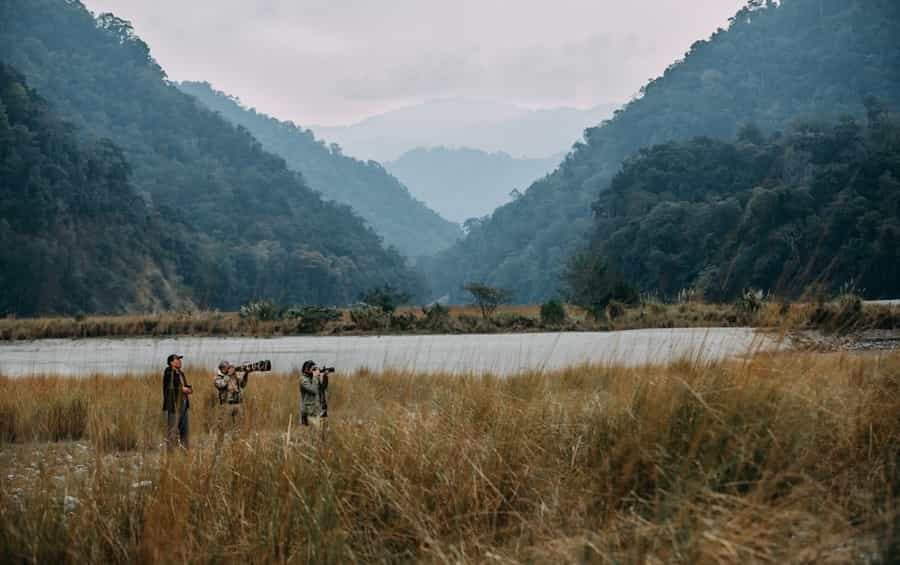
Namdapha National Park is the largest national park in North East India. It is situated in Arunachal Pradesh and spans over an area of 1,985 square kilometers. In the ecosystem of this park, there are more than 150 species of timber. Besides this, there are some rare fauna species like Abies Delavayi, Blue Vanda, Pinus Merkusi, and Mishimi Teeta. Tigers, Clouded Leopards, and Snow Leopards are reserved here in Changlang district of Arunachal Pradesh. Besides these, Assamese macaques, stump-tailed macaques, and hoolock gibbons are the important primates. Mammals like elephants, Indian bison, deer, and Asian black bears, as well as birds like the white-winged wood duck, great Indian hornbill, pheasant, and jungle fowl, are also major attractions for tourists.
Kaziranga National Park
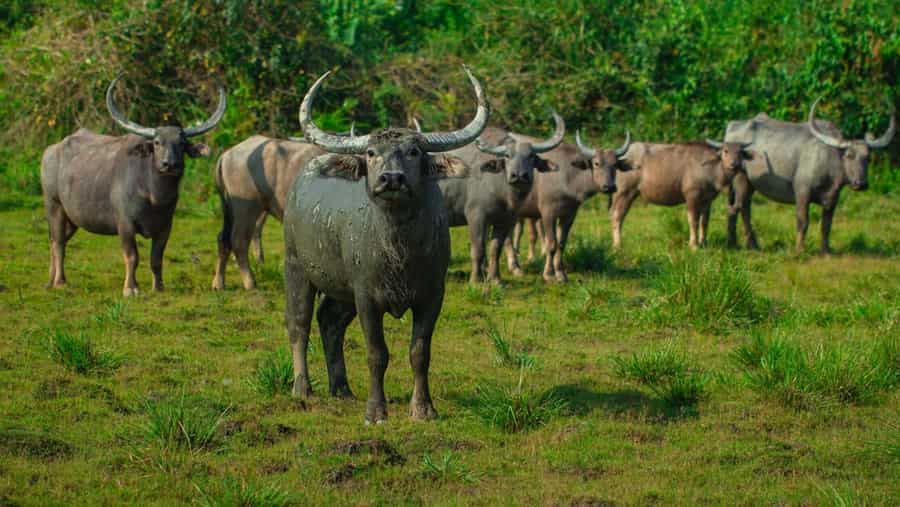
Kaziranga National Park is situated on the banks of the Brahmaputra River in Assam. It is considered the home of the world’s largest population of Great Indian one-horned rhinoceroses. Besides the rhinoceros, it is the habitat for leopards, swamp deer, barking deer, hog deer, wild boar, wild water buffalo, golden langur, capped langur, otter, grey-headed fish eagle, pygmy hog, crested serpent eagle, swamp partridge, Bengal florican, pelican, black-necked stork, herons, rock pythons, monitor lizards, and many more.
Manas National Park
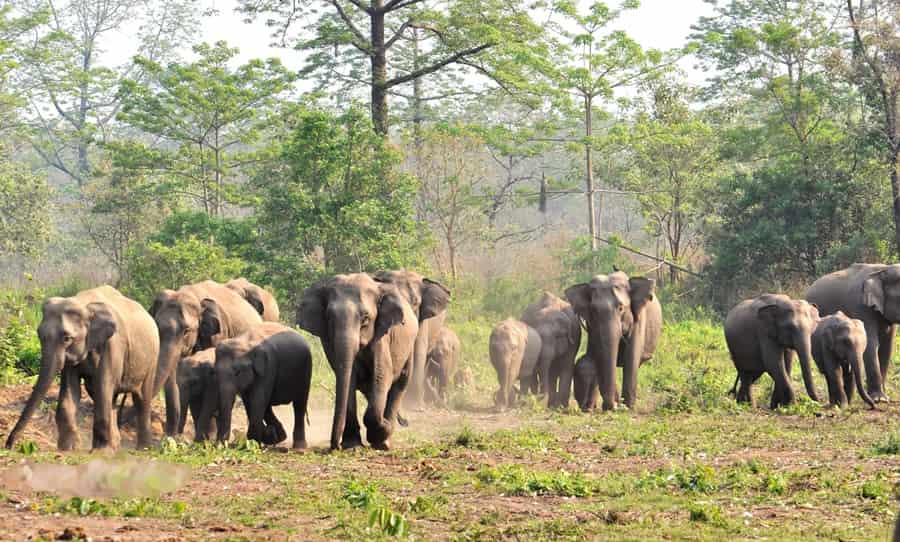
Manas National Park is declared a world heritage site by UNESCO. Here, the Assam government mainly focuses on the conservation of elephants. Pobitora Wildlife Sanctuary, located in Morigaon, Assam, is famous for its population of Great Indian one-horned rhinoceroses. Orang National Park is also known as Mini Kaziranga. Besides the one-horned rhinoceros, there are Asiatic elephants, Royal Bengal tigers, civets, hares, and porcupines, etc. Sepahijola National Park is a woodland with an artificial lake and is home to the unique spectacled monkey. It is located in Tripura. Keibul Lamjao National Park, in Imphal, Manipur, has Loktak Lake, the largest freshwater lake in India.
North-East India comprises several lakes and water bodies that have become tourist attractions. The lakes of Assam like Deepor Beel, Chandubi Lake, and Son Beel are quite famous. Other lakes include Chapanala Lake, Bordoibam Beel, and Bordoibam. Deepor Beel is in Kamrup district of Assam. It is a freshwater lake and one of the largest beels in Assam. The lake surroundings have ample flora and fauna, and the water plants and animals also contribute to the habitat of the area. Around Chandubi Lake are deep forests and tea gardens. Migratory birds flock to the lake during winter. The best time to visit the lake is from November to May. Son Beel is situated in the Karimganj district of Assam. It is one of the largest wetlands in Assam. During the winter season, crops like rice are cultivated in the area, and from March, the field becomes covered with water to turn into a lake. The lake is famous for fishing.
Umiam Lake is the famous lake in Shillong, Meghalaya. Sports and adventure activities like boating, scooting, water cycling, and kayaking are popular here. Loktak Lake is the largest freshwater lake in India, with several floating islands. In Mizoram, Palak Dil and Tam Dil are considered the most beautiful lakes. Sikkim has lakes that are famous tourist spots. Gurudongmar Lake is one of the highest lakes in the world. It is situated in the northern part of Sikkim. Khecheopalri Lake is considered a sacred lake. On the way to the monastery, there is a monastery, and the place is a significant site for Buddhists. Tsomgo Lake and Cholamu Lake are other important lakes in Sikkim.
States to Visit for
Assam
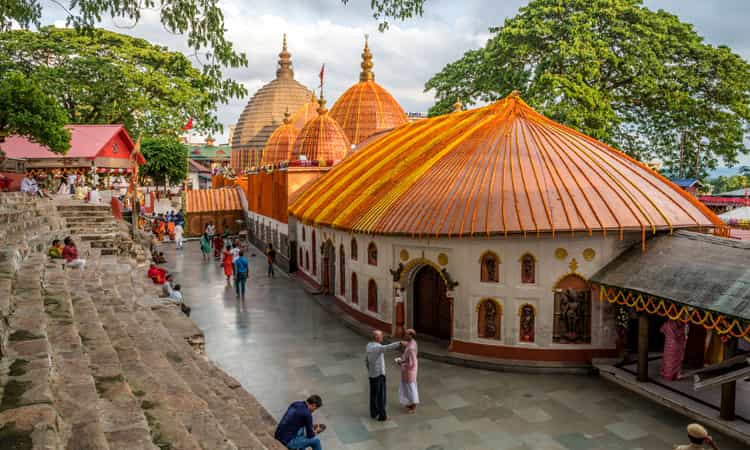
Assam is the central state of North East India. The main urban center and the largest city in North East India is Guwahati, located in Assam. The important tourist spots in Guwahati include Kamakhya Temple, Sankardev Kalakhetra, Assam State Zoo, and Umananda Temple. Besides these, places in the outskirts of the city like Sonapur, Madan Kamdev, and Chandubi Lake are also famous. Majuli is the largest freshwater island on the Brahmaputra River. This place is famous for its Vaishnavite Satras. Jatinga is a place famous for the mysterious bird suicides. Dibrugarh is regarded as the tea capital of the world. Tinsukia, Haflong, Hajo, Sivasagar, Jorhat, and Sonitpur are also very attractive places to visit.
Meghalaya
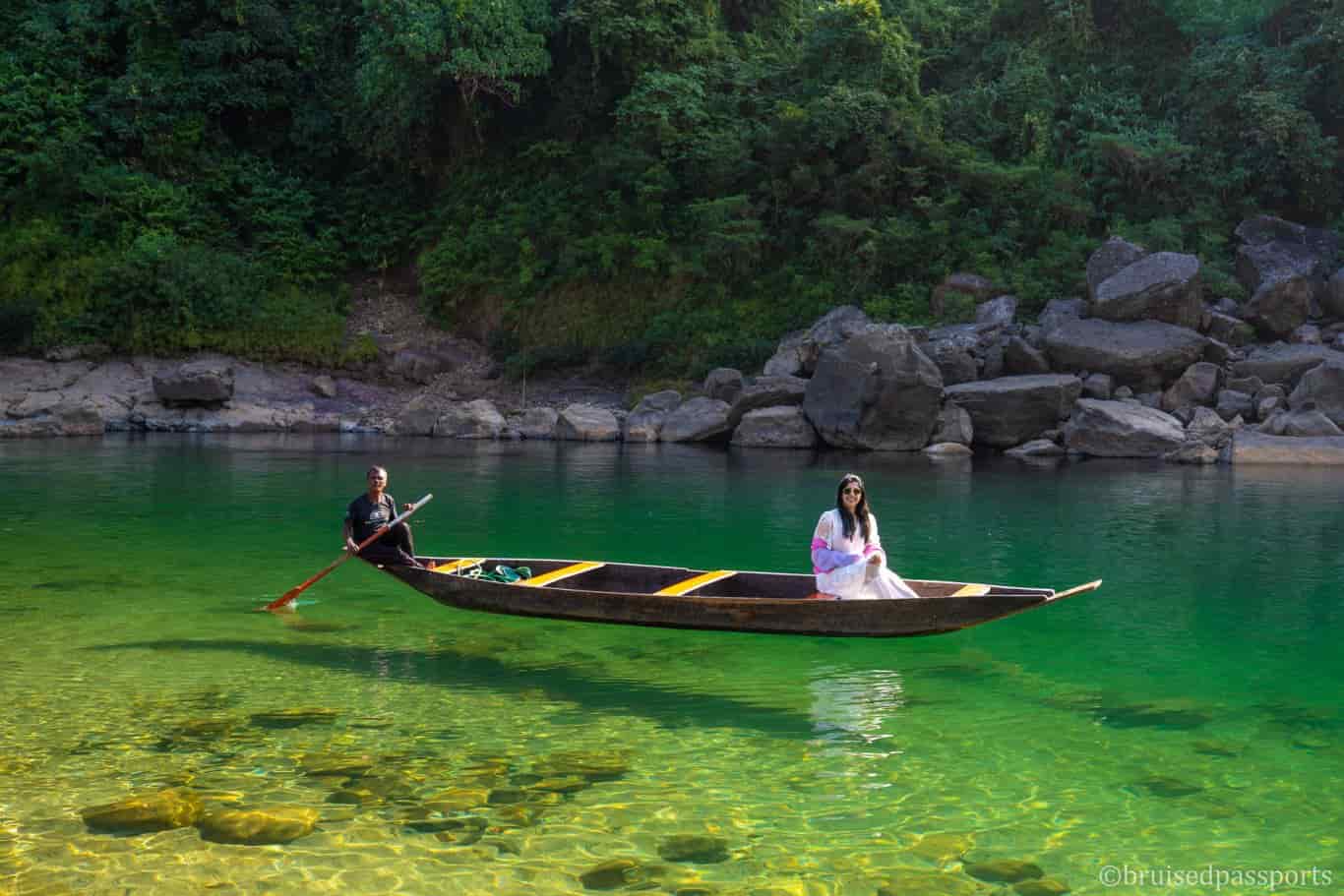
Meghalaya is the most pleasant tourist spot in North East India. Shillong is the center of the state, where many interesting places are situated. Elephant Falls, Wards Lake, Lady Hydari Park, Motphran, Shillong Peak, Captain Williamson Sangma State Museum, Don Bosco Centre for Indigenous Cultures, Entomological Museum, Air Force Museum, Chrysalis Gallery, Spread Eagle Falls, and Sweet Falls are the main attractions. Shillong Golf Course, the largest golf course in Asia, is located here. Besides Shillong, Cherrapunji is the most famous place to visit. Cherrapunji is best known for being the wettest city in the world. Mawsynram is also famous for its landscape. Mawlynnong is the cleanest village in Asia, where several living root bridges are located. Mawsmai Cave is one of the most attractive places to visit. Seven Sisters Falls and the border with Bangladesh in Cherrapunji are another splendid example of North East India’s beauty.
Aizawl
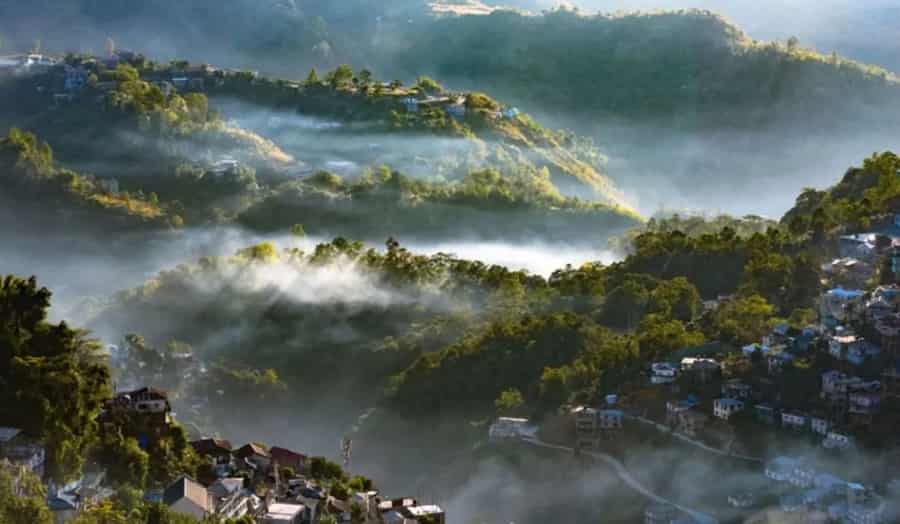
Aizawl is the capital of Mizoram. Mizoram State Museum, Champhai, Rih Dil, Murlen National Park, Thenzawl, and Lunglei are popular places to visit in Mizoram. The hill stations like Hmuifang Tlang and Reiek Tlang represent the scenic beauty of Mizoram, while Vantawng Falls is another beauty of the state. Palak Dil and Tam Dil are lakes that add extra beauty to the city.
Manipur
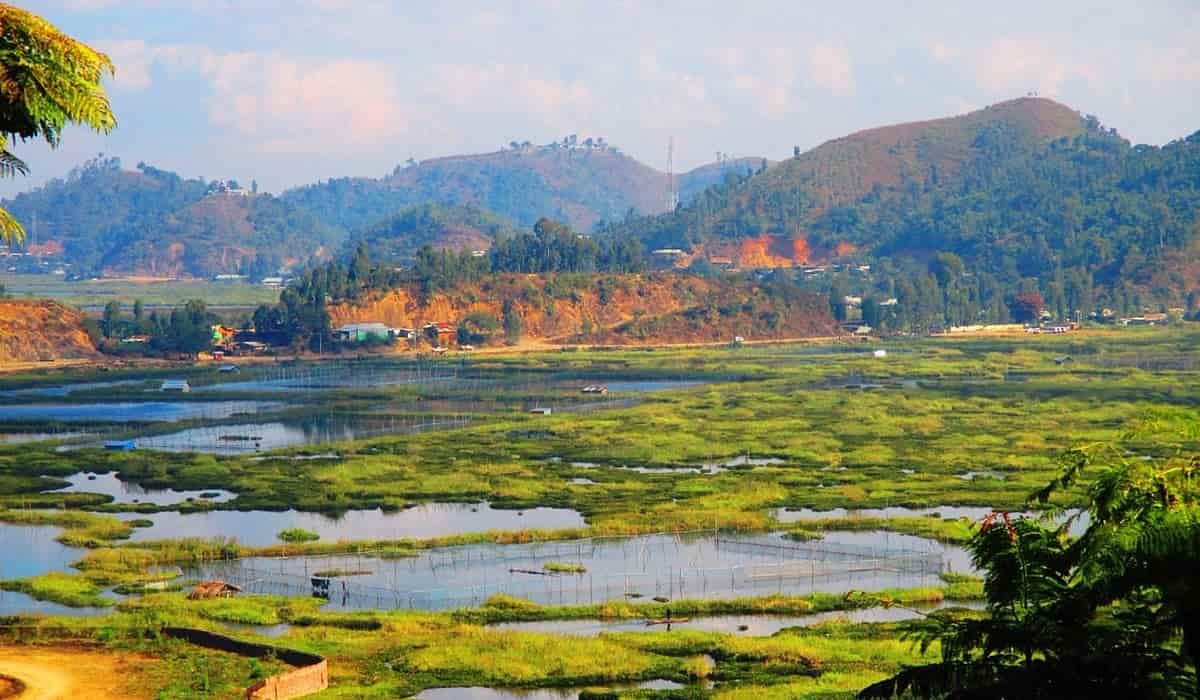
Manipur is very rich in cultural activities like martial arts, dance, theatre, and sculpture. The floating islands at Loktak Lake, Sangai, and other rare things found in Manipur make it unique. Kaina is a hill station in Manipur, regarded as a sacred place by Hindus. Keibul Lamjao National Park is a hub for Manipur’s eco-tourism. The famous picnic spot, Sadu Chiru, also known as Leiram Waterfall, is situated here.
Arunachal Pradesh
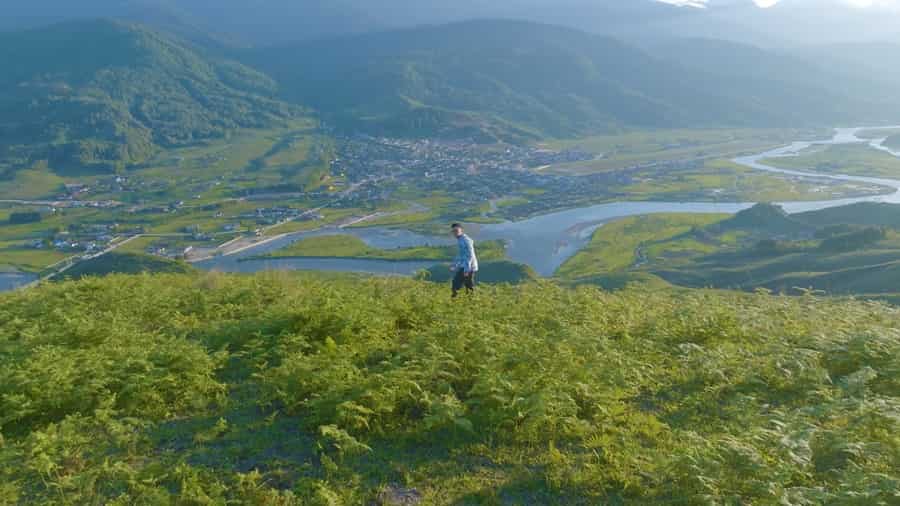
Arunachal Pradesh is a mythologically important state. It is believed that Lord Krishna’s wife, Rukmini, lived here, and in the Purana Lake, Parshuram washed his sins. Tawang is a town that consists of numerous Buddhist monasteries. Tezpur, Bomdila, Namdapha, and Itanagar are some of the places to visit. In the state capital, the Jawaharlal Nehru Museum is an important tourist spot.
Nagaland
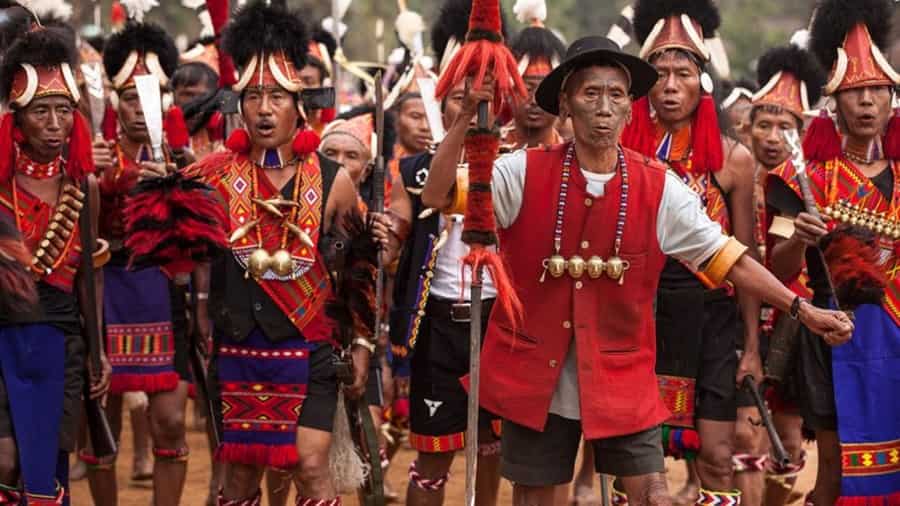
In Nagaland, Dimapur and Kohima are the most important cities. The World War cemetery, State Museum, Ruins of the Medieval Kachari Kingdom, and Rangapahar Reserve Forest are the main attractions. Longleng is a paradise for adventurers. Mokokchung, Mon, Peren, Phek, Tuensang, and Kiphire are also worth visiting. In Tripura, cities like Agartala, Deotamura, Kumarghat, etc., have many tourist spots. The rock-cut images, pineapple cultivation fields, Unakoti Tirtha, Dumboor Lake, Jampui Hills, and Pilak are the most famous places.
Sikkim
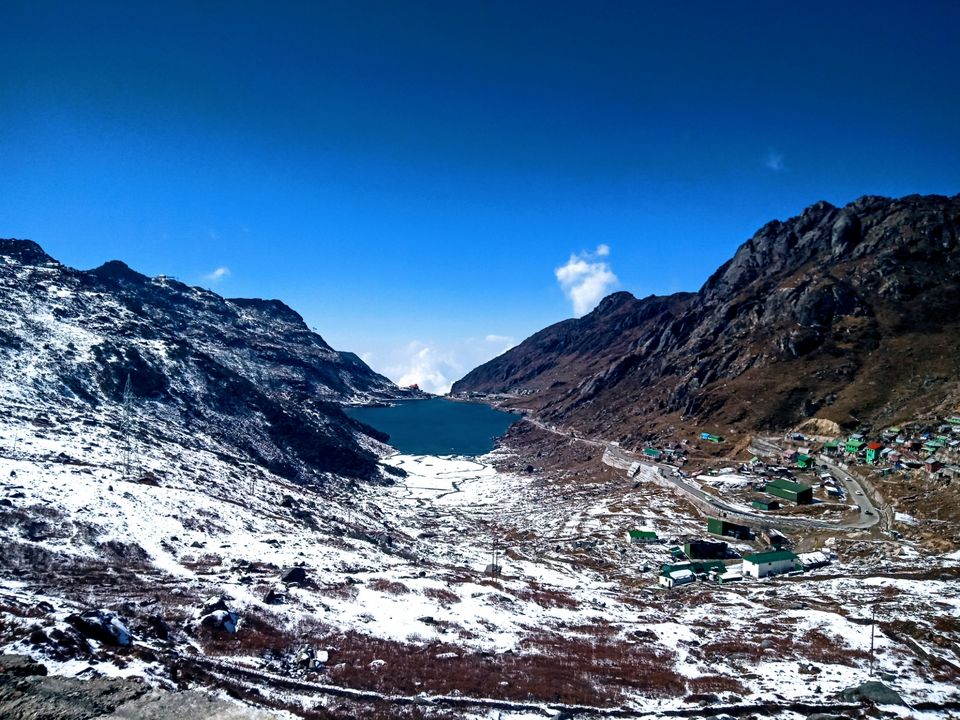
Sikkim is one of the best tourist spots, not only in North East India but also in India. Nathu La Pass, which is the corridor between China and India, is the most important and attractive tourist spot. Rumtek Monastery, Pemayangtse Monastery, and Phodong Monastery are sacred places for Buddhists. Gurudongmar Lake and Khecheopalri Lake create beautiful scenic beauty in Sikkim. Yumthang Valley is another mesmerizing hill landscape. Zemu Glacier is one of the most prolific attractions in Sikkim. Hanuman Tok is another sacred place for Hindus. Namgyal Institute of Tibetology is a place where students gain knowledge of Buddhism and Buddhist mythology.











 Call
Call WhatsApp
WhatsApp Enquiry
Enquiry